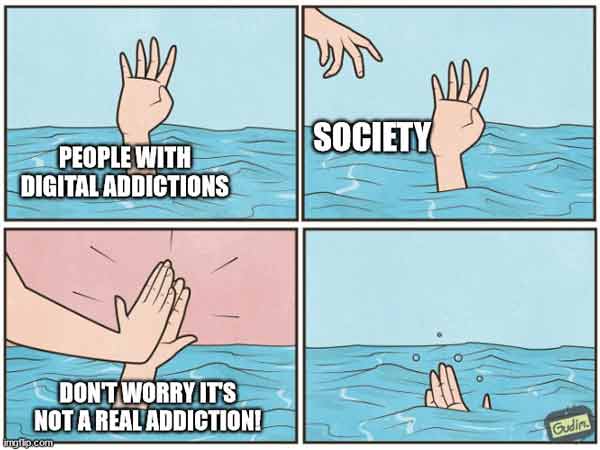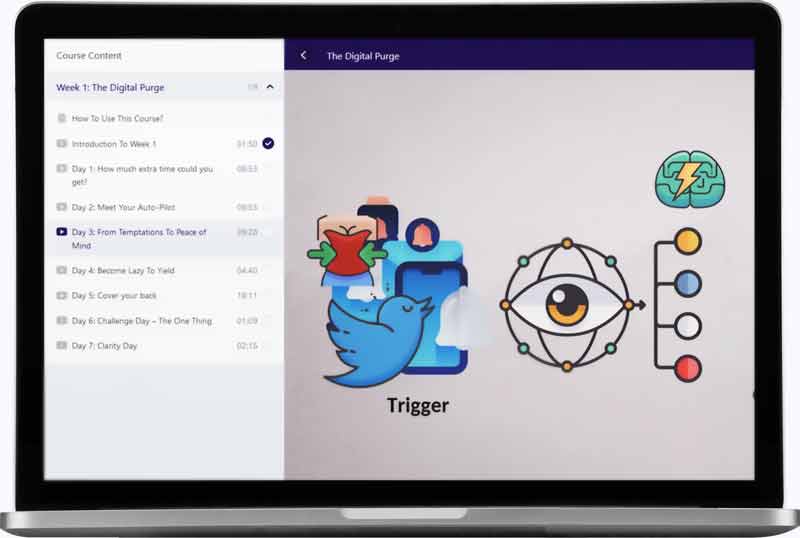Welcome to our digital detoxing series! A series on how to stop addictions to Fortnite,Facebook,Instagram,porn,Netflix, Youtube,Tinder… Find all the posts about digital addiction. Today, let’s talk about how to quit the headspace addiction.

- What’s the headspace addiction?
- Addiction to headspace, a “real” addiction?
- What’s considered headspace addiction
- How much headspace is too much?
- Some health and fitness addiction facts & statistics
- Symptoms & Causes of the headspace addiction
- Why is headspace so addictive?
- Possible causes of headspace dependency
- Symptoms, Causes and Signs of headspace addiction
- Problems, impacts & bad effects of headspace
- Some benefits of headspace
- health problems
- impact on brain & mental health
- impact on relationships
- How to stop & quit your headspace addiction
- Main steps and solutions to break the headspace addiction
- Best headspace blocker apps & functionalities
- where to seek extra help?
- Conclusion
- To Go Further
- How to help someone with headspace addiction
- Best books about health and fitness addiction
- Research about health and fitness addiction
What is the headspace addiction?
About headspace
Headspace is an online mental health platform that provides guided meditation, mindfulness, and sleep exercises to help manage stress and improve mental wellbeing.
Addiction to headspace, a “real” addiction?
Officially an addiction?
First, let’s have a look to the DSM-5,the Diagnostic and Statistical Manual of Mental Disorders. Does it includes headspace addiction?
No, headspace addiction is not listed in the DSM-5.
So what means “headspace addiction”?
Headspace addiction is a term used to describe an unhealthy obsession with meditation. It is often seen as a compulsive need to meditate for long periods of time, to the point where it interferes with other aspects of life. People with headspace addiction may feel a compulsion to meditate, even when they do not have the time or energy to do so. They may also become anxious if they are unable to meditate.
What is considered headspace addiction?
- 1. A persistent preoccupation with the amount of time spent thinking about or engaging in headspace activities.
- 2. An inability to reduce or stop headspace activities despite attempts to do so.
- 3. A withdrawal from other activities and relationships due to excessive time spent on headspace activities.
- 4. A tendency to neglect important responsibilities,such as work and family, due to excessive time spent on headspace activities.
- 5. A tendency to experience intense cravings or urges to use headspace when not actively engaged in the activity.
- 6. A sense of tolerance,or needing to spend increasingly longer amounts of time on headspace activities to achieve the same desired effect.
- 7. A sense of withdrawal,or experiencing negative emotions or physical symptoms when not actively engaged in headspace activities.
- 8. A persistent desire to use headspace in order to escape problems or to cope with difficult emotions,such as depression or anxiety.
How much headspace is too much?
There is no one-size-fits-all answer to this question, as everyone’s mental health needs are different. Generally, spending 10-20 minutes per day on a mindfulness practice such as headspace is recommended for overall emotional wellbeing. If you find you are spending more than this, it may be worth considering speaking to a licensed therapist about other ways to better manage your mental health.
Some health and fitness addiction facts & statistics

There is limited research on the prevalence of health and fitness addiction. However, some studies suggest that it may affect up to 10% of the population.
Here are some statistics related to health and fitness addiction:
1. According to a study published in the Journal of Behavioral Addictions, 10% of gym-goers met the criteria for exercise addiction.
2. A study published in the International Journal of Mental Health and Addiction found that individuals with body dysmorphic disorder (BDD) were more likely to have exercise addiction. BDD affects approximately 2% of the population.
3. The National Eating Disorders Association (NEDA) states that excessive exercise is a common behavior among individuals with eating disorders, affecting up to 80% of individuals with anorexia nervosa.
4. A survey conducted by the International Health, Racquet & Sportsclub Association (IHRSA) found that 18% of gym-goers reported feeling guilty if they missed a workout, and 14% felt anxious or irritable if they couldn’t exercise.
It’s important to note that not all individuals who engage in frequent exercise or have a strong interest in health and fitness are addicted. Health and fitness addiction is characterized by compulsive and excessive exercise that interferes with daily life and causes physical and/or psychological harm.
Is the headspace addiction widespread?
It is possible for some individuals to develop a dependence on mindfulness or meditation practices, including those offered by Headspace. Like any activity, it is important for individuals to engage in meditation practices in moderation and to seek help if they feel they are becoming addicted or reliant on the practice.
Symptoms, Causes and Signs of headspace addiction
Why is headspace so addictive?
Headspace is addictive because it provides an easy and accessible way to practice mindfulness and meditation. The app’s guided meditations, animations, and reminders make it easy to stick with your practice and to track your progress.
Additionally, the app’s simple and user-friendly interface makes it a pleasure to use, which can make it difficult to put down.
Possible causes of headspace dependency
Headspace addiction can be caused by a variety of factors, including biological, psychological, and environmental influences. Biological influences may include genetic predispositions and underlying mental health issues, such as anxiety or depression. Psychological influences may include unhealthy coping mechanisms, such as using Headspace as a distraction from negative thoughts and emotions. Finally, environmental influences can include the availability and accessibility of Headspace, as well as the influence of peers and family members who may be using it.
Signs & Symptoms of headspace addiction
Now let’s see if you have the headspace addiction problem.
- 1. You keep up with the latest headspace news and updates.
- 2. You’re always trying to find new ways to use headspace to better your life.
- 3. You find yourself talking about headspace with your friends and family.
- 4. You’re constantly recommending headspace to others.
- 5. You find yourself spending more and more time on headspace.
- 6. You’re always looking for new headspace content to explore.
- 7. You’ve become a little bit obsessed with headspace and its features.
Problems, impacts & bad effects of headspace: should you quit?

What are some benefits of headspace
Pros of Headspace:
- 1. Easy to Use:Headspace has an easy-to-use mobile app and website that makes it easier to access mindfulness and meditation. It also has a variety of options for users, like videos, music, and audio meditations.
- 2. Convenience:Headspace is available on a variety of devices, from smartphones and tablets to smartwatches and computers. This makes it incredibly convenient for users to practice mindfulness and meditation wherever they are.
- 3. Affordable:Headspace is much more affordable than traditional meditation classes, as it offers a free basic plan and monthly subscriptions at a fraction of the cost.
- 4. Variety:Headspace has a variety of content, including videos, music, and audio meditations. This allows users to choose what best suits their needs.
- 5. Expert Guidance:Headspace provides guided meditations and mindfulness exercises from trained experts. This helps users learn how to practice mindfulness and meditation in a safe and effective way.
Why is Headspace So Great?
Headspace is a great resource for mindfulness and meditation because it is easy-to-use, convenient, affordable, and offers a variety of content and expert guidance. It provides users with a way to practice mindfulness and meditation without having to attend expensive classes or workshops. Headspace is also a great way to build a consistent practice of mindfulness and meditation, as users can access it anytime, anywhere.But at the opposite, what can be some headspace addiction problems addicts suffer from?
general health problems
Headspace can have a positive effect on your health and wellbeing. When practiced regularly, the mindfulness, breathing, and relaxation techniques taught in Headspace can reduce stress, improve focus and concentration, and help you to be more present and mindful throughout the day. It can also help to improve sleep quality and reduce symptoms of depression and anxiety.
Additionally, regular practice of the techniques taught in Headspace can help to improve relationships and boost overall mental health.
headspace and sleep disorder
No, using the Headspace app is not known to cause sleep disorders or sleep problems. In fact, Headspace offers many guided meditations specifically aimed at improving sleep quality and helping users fall asleep more easily. However, if you are experiencing sleep problems or disorders, it is important to consult with a healthcare professional to determine the underlying cause and appropriate treatment.
headspace affecting your brain & mental health: bad for brain and mental health?
Some effects of headspace on your brain
- 1. Reduced Concentration:Headspace can reduce your concentration and focus by distracting you from the task at hand. This can lead to fatigue and an inability to stay on task for a prolonged period of time.
- 2. Increased Stress:Headspace can increase stress levels, especially if it is used as an escape from reality. This can lead to a heightened sense of anxiety and depression.
- 3. Sleep Disturbances:Headspace can cause sleep disturbances such as difficulty falling asleep or staying asleep.
- 4. Cognitive Decline:Prolonged use of Headspace can lead to a decline in cognitive functions such as memory, concentration, and problem-solving.
- 5. Disconnect From Reality:Constant use of Headspace can lead to a feeling of disconnection from reality. This can cause a distorted view of the world and lead to mental health issues.
Some effects of headspace on your mental health
- 1. Unhealthy Dependence:Headspace can be addictive and can lead to an unhealthy reliance on the app as a substitute for in-person therapy. This can be detrimental to your mental health and make it difficult for you to manage your emotions in real life situations.
- 2. Misleading Information:The app contains a lot of information about mental health and wellness, but much of it is not based on scientific evidence. This can lead to false beliefs about mental health and prevent people from seeking professional help.
- 3. Lack of Personalization:Headspace is not tailored to an individual’s needs, so it may not be as effective as traditional therapy. It also may not be suitable for those with more severe mental health issues.
- 4. Isolation:Headspace encourages users to stay home and practice mindfulness alone. This can lead to feelings of isolation and loneliness, which can have a negative impact on mental health.
Does headspace cause stress and anxiety?
No, Headspace is a mindfulness and meditation app that is designed to reduce stress and anxiety. The app provides guided meditations and exercises that help users develop a sense of calm and focus, which can lead to reduced stress and anxiety over time. However, if you are experiencing stress or anxiety while using the app, it may be helpful to speak with a mental health professional to identify any underlying issues that may be contributing to these feelings.
Can headspace addiction lead to sadness and depression?

It is possible for addiction to headspace or any form of meditation to lead to sadness and depression if it becomes a compulsive behavior that interferes with daily functioning and relationships. If a person is relying solely on headspace or meditation to cope with negative emotions without addressing the underlying issues, it can lead to a cycle of avoidance and reinforce feelings of sadness and depression.
Additionally, if a person is using headspace or meditation as a form of escapism from reality or to numb themselves, it can have negative effects on their mental health. It is important to use headspace and meditation as a tool for self-care and balance, rather than as a means of avoidance or addiction.
Dopamine and headspace
Dopamine is a neurotransmitter that plays a crucial role in the brain’s reward system. It is associated with feelings of pleasure and motivation. When we experience something pleasurable or rewarding, such as eating delicious food or achieving a goal, our brain releases dopamine, which reinforces the behavior and encourages us to repeat it.
Headspace is a meditation app that provides guided meditations and mindfulness exercises to help users improve their mental well-being. Meditation has been shown to increase dopamine levels in the brain, which can improve mood and reduce stress.
Practicing mindfulness and meditation through apps like Headspace can help regulate dopamine levels in the brain, leading to feelings of calm, focus, and motivation. In turn, this can help improve overall mental health and well-being.
headspace effects on Focus, productivity, attention span, academic performance…
Headspace, a popular meditation app, has been shown to positively affect focus, productivity, attention span, and academic performance. Regular meditation practice, which can be facilitated through the use of the Headspace app, has been found to improve cognitive function, increase focus, decrease stress and anxiety, and improve academic performance. Studies have also shown that meditation can improve working memory and attention span.
Additionally, practicing meditation with the Headspace app can help individuals develop mindfulness skills, which can lead to improved emotional regulation and decision-making, as well as increased resilience in the face of stressors. Overall, incorporating Headspace into one’s daily routine can have a positive impact on various aspects of cognitive and emotional functioning, leading to improved performance in academic and professional settings.
A word about ADHD and headspace
People with ADHD may find it challenging to focus and may experience racing thoughts, which can make meditation difficult. However, studies have shown that meditation can help improve attention and focus in individuals with ADHD.
Headspace, a meditation app, offers guided meditations and mindfulness exercises that may be helpful for people with ADHD. The app’s guided meditations can help individuals with ADHD learn how to focus their attention and cultivate a calmer state of mind, which can improve their overall well-being.
In conclusion, people with ADHD may benefit from using HeadSpace, but they may need to experiment with different types of meditations and settings to find what works best for them.
affecting your relationships
headspace and self-esteem
Headspace, or the state of mind, can have a significant impact on self-esteem. When a person’s headspace is negative, it can lead to feelings of low self-worth and self-doubt. On the other hand, a positive headspace can promote feelings of confidence and self-assurance.
If a person is constantly thinking negative thoughts, they may start to believe that they are not good enough, capable enough, or worthy of success. This can lead to a decrease in self-esteem and a lack of motivation to pursue their goals.
On the other hand, if a person is in a positive headspace, they are more likely to view themselves in a positive light. They may feel more confident in their abilities and more capable of achieving their goals. This can lead to an increase in self-esteem and a greater sense of self-worth.
In summary, a person’s headspace can have a significant impact on their self-esteem. By cultivating a positive headspace, individuals can promote feelings of self-assurance and confidence while reducing self-doubt and negative self-talk.
headspace addiction leads to isolation and loneliness?
.jpg)
Any addiction, including addiction to meditation or mindfulness practices like headspace, can potentially lead to social isolation and loneliness. This can happen if the person spends an excessive amount of time meditating or practicing mindfulness to the point where they neglect social relationships and activities. It is important to maintain a balance between self-care practices and social connections to avoid isolation and loneliness.
Effects of headspace on your relationship
Positive effects of Headspace on your relationship:
- 1. Improved communication:Headspace can help you communicate better with your partner, as it can help you identify your emotions and express them more effectively.
- 2. Reduced stress and anxiety:By practicing meditation and mindfulness techniques, Headspace can help you reduce stress and anxiety levels, which can have a positive impact on your relationship.
- 3. Increased empathy and understanding:Headspace can help you become more empathetic towards your partner, as it can help you understand and appreciate their perspective.
- 4. Better conflict resolution:By improving communication and reducing stress levels, Headspace can help you resolve conflicts with your partner more effectively.
Negative effects of Headspace on your relationship:
- 1. Over-reliance on Headspace: If you become too dependent on Headspace to manage your emotions, it can lead to a lack of emotional connection with your partner.
- 2. Overcoming challenges on your own:If you rely too heavily on Headspace to overcome relationship challenges, you may miss out on the opportunity to work through these challenges with your partner.
- 3. Lack of spontaneity:If you become too rigid in your Headspace practice, it may limit your ability to be spontaneous and creative in your relationship.
- 4. Misunderstanding the purpose of Headspace:If you or your partner misunderstand the purpose of Headspace, it can lead to confusion and miscommunication in your relationship.
How To Stop & quit Your headspace Addiction
Finally you think you are addicted to headspace and you are wondering how to quit it? How to break and overcome your cravings for headspace?
Here are the best solutions, steps, supports, resources and help you can get to treat your headspace addiction.
Main steps and solutions to break the headspace addiction
- 1. Acknowledge the addiction and its impact on your life.
- 2. Reach out for professional help.
- 3. Establish a support system of friends and family.
- 4. Develop healthy coping skills and stress management techniques.
- 5. Identify and address any underlying issues such as anxiety,depression, or trauma.
- 6. Avoid situations that trigger headspace addiction.
- 7. Set realistic goals and objectives for recovery.
- 8. Re-learn how to enjoy activities and hobbies in a healthy way.
- 9. Develop better self-care habits and lifestyle choices.
- 10. Celebrate your successes and reward yourself for progress.
Actually, that’s what most documentation out there is about… However, quitting a digital addiction can be a bit trickier than that.
So our team, after testing many ways, designed a bulletproof way to overcome them. Here are some clear and practical steps that are very powerful to quit a digital addiction, including headspace:
1. Purge temptations: Get rid of headspace
First, cleaning your life from temptations is much easier than resisting to them. Disable or delete your headspace accounts, change the password and hide it somewhere you can’t access easily, keep your phone / computer far away… Out of sight out of mind.
Here is a video from our course the The Digital Purge. on how to add resistance to your temptations, so you become so lazy to engage with them that you give them up:


